The World Monuments Fund has announced its 2025 Watch – here are some of the endangered sites on the list
Every two years, the World Monuments Fund creates a list of 25 monuments of global significance deemed most in need of restoration. From a modernist icon in Angola to the cultural wreckage of Gaza, these are the heritage sites highlighted
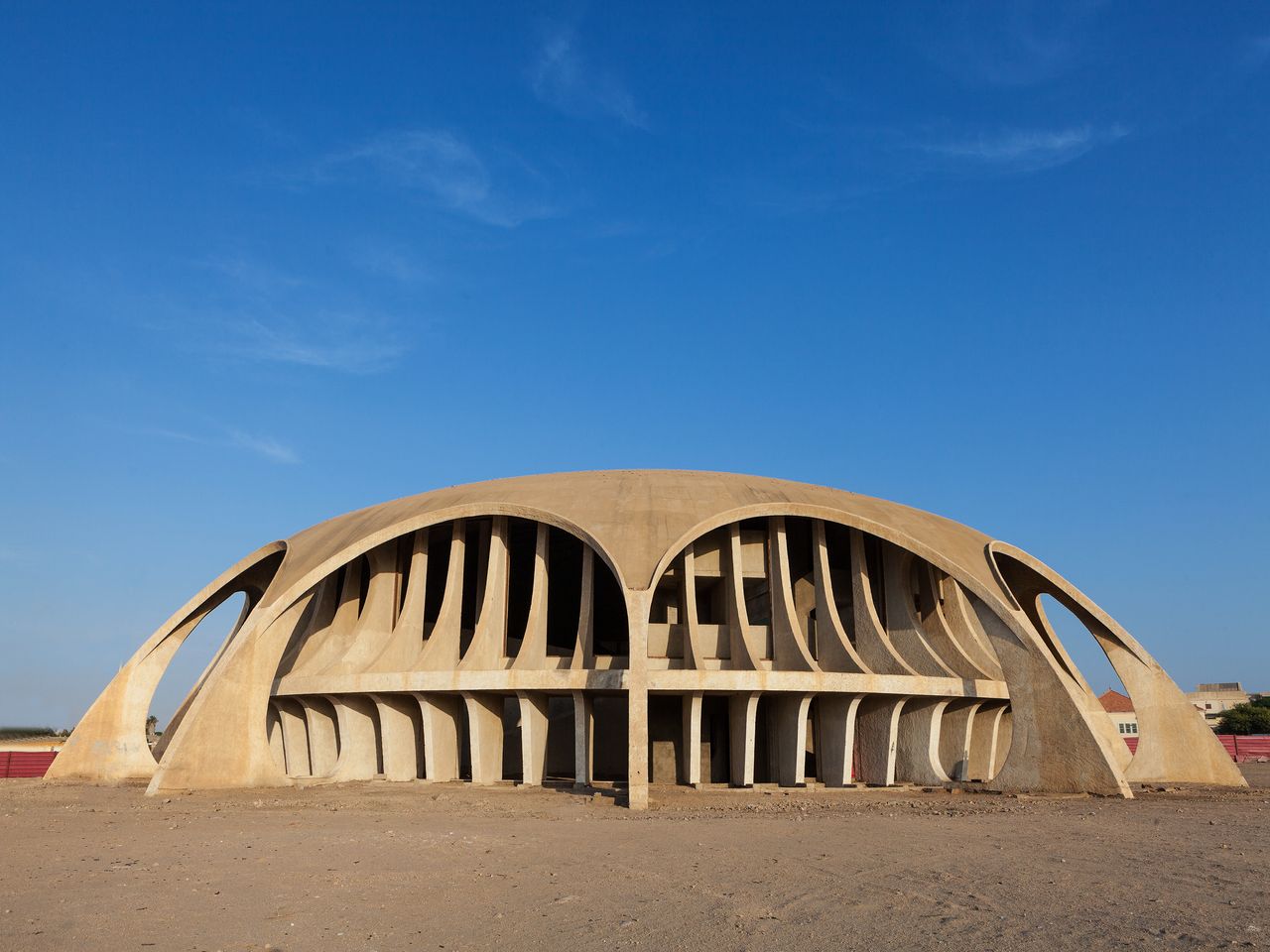
The World Monuments Fund’s Watch list identifies monuments of cultural and historical significance that are endangered by factors such as globalisation, tourism, conflict and climate change. An open call for nominations, which come from local groups or even individuals, is held every two years to call attention to at-risk heritage and key restoration projects.
This year, the Watch received over 200 nominations pertaining to heritage sites in 69 countries. However, there are only 25 places available. The WMF’s selection process considers things like a site’s local and global significance, the urgency of the proposed project, and its likelihood of success. The 2025 list spans 29 countries, ranging from Palestine to France, plus – more on this later – the Moon.
For selected sites, the WMF galvanises action in a number of ways: being on the Watch provides them with global recognition, but also concrete expertise. Members collaborate with sites to co-design strategies for awareness, fundraising and on-the-ground preservation.
From Africa’s Swahili Coast to the Old City of Antakya in Turkey, the types of challenges faced by monuments on the Watch reflect the problems we face as a global society. In Sub-Saharan Africa, for example, 81 per cent of 2025 Watch sites cited climate change as the main challenge faced. In Asia and the Pacific, 62 per cent cited rapid urbanisation and development. In Latin America and the Caribbean, the biggest problem was tourism, and in the Middle East and North Africa it was conflict and crisis recovery. This illustrates the extent to which heritage and conservation are wrapped up in social, political and geopolitical issues.
Here are some of the heritage sites prioritised by the WMF in 2025.
Cinema Studio Namibe, Angola
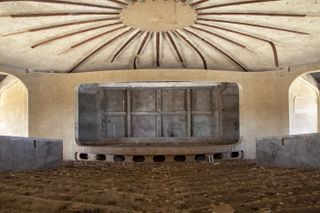
Between 1940 and the early-1970s, Angola saw a surge in the construction of cinemas. Initially created by the Portuguese colonial regime as instruments for propaganda, these theatres became popular spaces for socialising and entertainment, showing national and international films and then, following the onset of Angola’s War of Independence, material that reflected the revolutionary ideas of the liberation movement.
The construction of these cinemas coincided with the modernist movement, resulting in fantastic structures like the Cinema Studio Namibe, located in Moçâmedes (formerly Namibe). Designed by Portuguese architect José Botelho Pereira, this is a prime example of tropical modernist architecture, and echoes the cultural and political history of twentieth-century Angola. Construction began in 1973, but never completed due to the outbreak of the Angolan Civil War two years later.
Wallpaper* Newsletter
Receive our daily digest of inspiration, escapism and design stories from around the world direct to your inbox.
Today, the Cinema Studio Namibe lies in a state of decay, as do many of the cinemas built around the same time. Recent urban regeneration initiatives in Moçâmedes, however, have brought attention to its state.
Buddhist grottoes of Maijishan and Yungang, China

Buddhist grottoes are among the most remarkable legacies of ancient China. The rock-cut architecture at Maijishan and Yungang in northern China is home to cave temples, some containing hundreds of hand-excavated prayer halls and niches. The Maijishan grottoes, located in the mountains of Gansu Province, contain 194 caves housing over 7,200 sculptures and murals. The Yungang grottoes, in Shanxi Province, were created during the Northern Wei Dynasty in the fifth and sixth centuries.
Both Maijishan and Yungang are designated as World Heritage Sites, and are increasingly threatened by the impact of mass tourism. Around one million people visit Maijishan each year, with as many as 13,000 per day during peak season, putting immense strain on the cantilevered walkways. Both sites need improved visitation and preservation strategies to help balance accessibility and protection.
Gaza historic urban fabric, Palestine
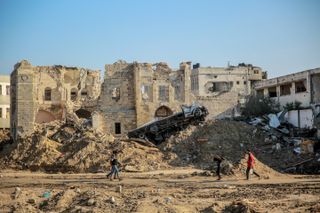
The recent conflict in Gaza has taken a devastating toll on its cultural landmarks. According to an assessment by the World Bank, European Union and United Nations conducted nearly a year ago, in March 2024, 63 per cent of Gaza’s heritage sites had sustained damage, with 31 per cent completely destroyed. According to Unesco, Israeli bombardment has damaged or destroyed 75 heritage sites, many of which reflect Gaza’s role as a crossroads of civilisations: the Church of Saint Porphyrius, for example, is the oldest active church in Gaza, built in the 1100s. The Great Omari Mosque is Gaza’s largest and oldest mosque, and Hammam al-Sammara, a bathhouse, has pre-Islamic Samaritan origins. This region is replete with cultural history spanning approximately 12,000 years.
The destruction of heritage not only erases the past but also undermines community resilience, identity and morale, making preservation integral to long-term reconstruction.
Historic lighthouses of Maine, USA
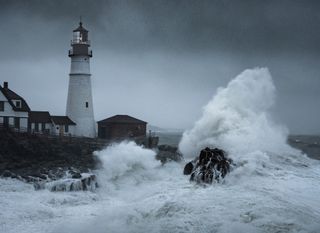
Maine’s lighthouses serve as beacons of the state’s history of industry and prosperity. They guarded its coastline for centuries, with the Portland Head Light, Maine’s oldest lighthouse, first being lit in 1791. A further 68 were constructed by 1910 – these lighthouses have featured prominently in American literature and popular culture, including Henry Wadsworth Longfellow’s poem The Lighthouse and the 1994 film Forrest Gump.
Today, 66 of Maine’s historic light stations remain, 57 of which still guide sailors using modern automated techniques. However, climate change – specifically rising sea levels and increased storm surges – poses a significant threat.
The Moon

The Moon, an endangered monument? Apparently so. When you think about the fact that the Apollo 11 mission of 1969 was one of humanity’s most significant scientific and cultural milestones, it makes sense. The Moon is home to over 90 historic sites and artifacts, including Tranquility Base, where Apollo 11 landed, and Neil Armstrong’s first footprints.
As we sit on the precipice of a new era of space exploration driven by private companies such as SpaceX, and as the global space economy, projected to reach $1.8 trillion by 2035, drives increased activity on the Moon’s surface, WMF suggests that we need to consider the long-term protection of our lunar heritage.
Also on the 2025 Watch list…
War Waru agricultural fields, Peru

Bhuj historic water systems, India
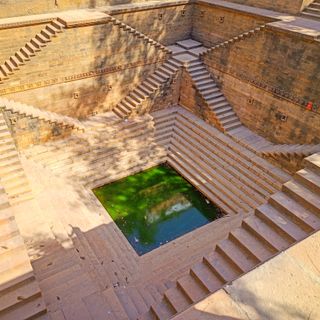
Monasteries of Drino Valley, Albania

Water reservoirs of the Tunis Medina, Tunisia
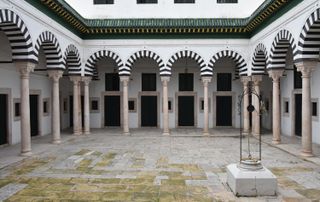
Kyiv Teacher’s House, Ukraine

Anna Solomon is Wallpaper*’s Digital Staff Writer, working across all of Wallpaper.com’s core pillars, with special interests in interiors and fashion. Before joining the team in 2025, she was Senior Editor at Luxury London Magazine and Luxurylondon.co.uk, where she wrote about all things lifestyle and interviewed tastemakers such as Jimmy Choo, Michael Kors, Priya Ahluwalia, Zandra Rhodes and Ellen von Unwerth.
-
 Women’s Fashion Week A/W 2025: what to expect
Women’s Fashion Week A/W 2025: what to expectAfter some seasons of flux, Women’s Fashion Week A/W 2025 will see a number of designers begin their tenures at the world’s best-known houses – though there are also some notable absences too. Here’s what to expect in New York, London, Milan and Paris
By Jack Moss Published
-
 Never-before-seen Barbara Hepworth works exhibited in landmark exhibition
Never-before-seen Barbara Hepworth works exhibited in landmark exhibitionIn 'Barbara Hepworth: Strings', various Hepworth sculptures will be exhibited in public for the first time
By Anna Solomon Published
-
 Point, shoot and process with Lomography’s two new colourful Instax camera editions
Point, shoot and process with Lomography’s two new colourful Instax camera editionsWith the Pemberley and The Blues editions, the Lomo’Instant Square Glass camera provides stylish and pocketable analogue photography
By Jonathan Bell Published
-
 On the shores of Discovery Bay, this wooden house is the ultimate waterside retreat
On the shores of Discovery Bay, this wooden house is the ultimate waterside retreatDekleva Gregorič’s Discovery Bay House is a structured yet organic shelter that blends perfectly into the surrounding Pacific Northwest landscape
By Jonathan Bell Published
-
 The 10 emerging American Midwest architects you need to know
The 10 emerging American Midwest architects you need to knowWe profile 10 emerging American Midwest architects shaking up the world of architecture - in their territory, and beyond
By Ellie Stathaki Published
-
 A light-filled New York loft renovation magics up extra space in a deceptively sized home
A light-filled New York loft renovation magics up extra space in a deceptively sized homeThis New York loft renovation by local practice BOND is now a warm and welcoming apartment that feels more spacious than it actually is
By Léa Teuscher Published
-
 The Hengqin Culture and Art Complex is China’s newest cultural megastructure
The Hengqin Culture and Art Complex is China’s newest cultural megastructureAtelier Apeiron’s Hengqin Culture and Art Complex strides across its waterside site on vast arches, bringing a host of facilities and public spaces to one of China’s most rapidly urbanising areas
By Jonathan Bell Published
-
 Inside Bell Labs, the modernist vision behind Severance's minimalist setting
Inside Bell Labs, the modernist vision behind Severance's minimalist settingWe explore the history of Bell Labs - now known as Bell Works - the modernist Eero Saarinen-designed facility in New Jersey, which inspired the dystopian minimalist setting of 'Severance'
By Jonathan Bell Published
-
 Zaha Hadid Architects’ new project will be Miami’s priciest condo
Zaha Hadid Architects’ new project will be Miami’s priciest condoConstruction has commenced at The Delmore, an oceanfront condominium from the firm founded by the late Zaha Hadid, ZHA
By Anna Solomon Published
-
 A West Austin house invites you to commune with nature
A West Austin house invites you to commune with natureWestview Residence by Alterstudio, a West Austin house among trees, makes the most of large windows and open-air decks in a verdant setting
By Ellie Stathaki Published
-
 Apple’s new Miami store employs the principles of biophilic design
Apple’s new Miami store employs the principles of biophilic designApple’s first mass-timber store connects shoppers to nature while echoing the Art Deco architecture of Miami
By Anna Solomon Published